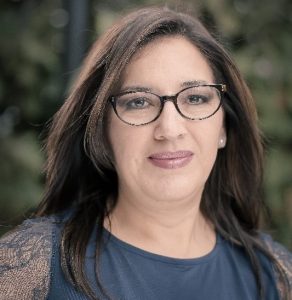
WRITTEN BY Jennifer Terlouw, jlterlou@ncsu.edu
On September 30th, Dr. María-Elena Cazar Ramírez presented her experience in international research as part of the CALS SAIGE International Seminar Series. This presentation was a little different than CALS SAIGE Seminars of the past, as it was hosted over Zoom and Facebook live, but this opened the seminar up to attendees from all over the world. This was doubly appropriate for Dr. Cazar Ramírez’s presentation, “Building bridges with International Collaboration: a Journey from Ecuador to the world”.

Dr. Cazar Ramírez last came to NC State in 2019 for three months as a Borlaug fellow, working with Dr. Deyu Xie to study bioactive secondary metabolites in Ecuadorian cacao, specifically polyphenols. She is currently the Head of the Biotechnology and Biodiversity Group at Universidad de Cuenca in Ecuador, with her main research interest in bioactive secondary metabolites from plants and fungi.
Dr. Cazar Ramírez’s presentation began with the history of the university as a learning institution: “The university was born from a priority for all civilizations: the transmission of knowledge.”
The use of the word “university” dates back to the Imperial University in China as well as the Law Schools of Constantinople and the Agora Gymnasium and Academia in Greece. The oldest recognized university is the University of Bologna, a scholar’s institution. In the 12th century, the terms Consortia, Comitiva, and Nationes were used to organize university structure: Consortia for associations among students, Comitiva for association between professor and student, and Nationes for students who came from the same geographic region. The word “Universitates” later emerged in the 13th century to represent foreign students crossing national lines to attend universities. So, international scholarly exchange dates back to at least the 13th century, according to this calculus.
Dr. Cazar Ramírez followed this helpful history of international scholarly pursuit with her own personal history as a student in Ecuador. Her mother studied to become a chemistry teacher and Dr. Cazar Ramírez took inspiration from the time she spent in her mother’s lab:
“I always dreamed of having something like this for me. A beautiful dream for me.”
As part of that dream, Dr. Cazar Ramírez learned English from an American Peace Corps teacher at her elementary school who taught in full immersion. Looking ahead at her own time in university, Dr. Cazar Ramírez achieved a Bachelor of Science in Chemistry at Escuela Superior Politecnica del Chimborazo (ESPOCH) in Riobamba, Ecuador. During her degree program, international academics from Italy visited as part of Cooperazione Internationale (COOPI) to give special subject classes for scholarly exchange with the undergraduate students.
Dr. Cazar Ramírez went on to achieve a PhD scholarship at the Universidad de Talca in Chile, where she earned her PhD in Natural Products Research. Further expanding on her international experience, Dr. Cazar Ramírez was able to do work with the Institute for Biotechnology and Drug Research at the Technische Universität in Kaiserslautern, Germany. She spent two months there using the university’s resources to work on her samples, and she learned the research techniques used in their labs, which differed greatly from those used in South America.
Dr. Cazar Ramírez visited Germany again on a scientific exchange trip to Universität Osnabrück and even later, worked with a German and Ecuadorian team to organize a Biodiversity Summer School hosted in Germany. Drawing on that experience, Dr. Cazar Ramírez hosted a Biodiversity Spring School in Ecuador, aiming to offer the same quality of program that she and her team had put together in Germany.
Dr. Cazar Ramírez expressed that, over the history of universities, which she has studied closely,

universities have managed to survive 7 pandemics so far. She feels that universities produce, appraise, and evaluate knowledge and culture through research and teaching. Internationalization is a two-way bridge, bringing new challenges, ideas, and perspectives to all involved. Dr. Cazar Ramírez also emphasized that reciprocity is a key element for true exchange.
In closing, Dr. Cazar Ramírez shared a line from Chilean artist Beatriz Aurora’s painting, “No a la Guerra”:
“Otro mundo es posible, un mundo donde quepan todos los mundos.”
“Another world is possible, a world where all worlds fit.”